Welcome to the world of door kick plates and push plates - the unsung heroes of door protection. Imagine a knight in shining armor, but instead of guarding a castle, they're guarding your doors from the daily battles of scuffs, kicks, and scratches.
In this blog, we're diving into the nitty-gritty of these protective accessories, answering your burning questions and guiding you through the maze of choices.
Whether you're a facility manager, a contractor on site, or just someone looking to spruce up your building, you're in the right place to learn about the small, yet mighty defenders of your doors.
What is a Kick Plate and Why Do I Need One?
Kick plates are usually metal or plastic strips installed at the bottom of doors, primarily in commercial settings such as hospitals, care homes, and public buildings.
They protect doors from wear and tear and allow the door to be pushed open using a foot, without it marking or damaging the door. These protection plates also allow for doors to be pushed open by trolleys or other large, wheeled objects such as beds, without detriment.
How Many Door Kick Plates Do I Need?
One - Kickplates can be fitted to one side of the door only, at the bottom. This would usually be the push side of a door.
Two - If doors are subject to heavy use and abuse, and cost allows, you can fit door protection plates to both the pull and push side of doors.
Four - In addition to kickplates on the bottom of a door, you may also want to install midrail plates.
So, it very much depends on your built environment and its users. One, two, or four!
Where Do Finger Plates Go On A Door?
Finger plates, also known as push plates, are installed at the same height as the operating furniture. They’re typically installed with a pull handle, and fitted on the opposite face of the door, to cover the bolt fixings of the pull handle. They’re called push plates as they’re fixed to the push face of the door.
Are Kick Plates Custom Made?
While we stock some standard sizes, most are manufactured to custom sizes based on your provided measurements. It's important to ensure the measurements are correct before ordering.
Square or radiused corners are available, as are non-standard drilling patterns and cutouts if required. It is common for kickplates to have square corners and push plates to have radiused, but they can be matching - it’s all up to you.
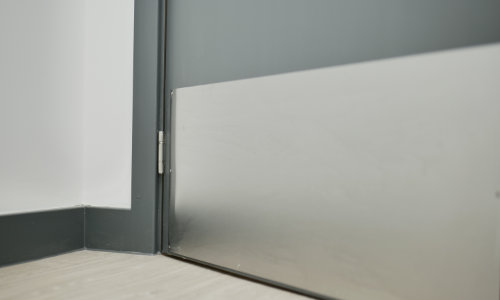
What Size Kickplates and Door Finger Plates Do I Need?
Kickplates dimensions vary as they extend most of the width across the face of the door. Different sizes will be required for the pull and push side of the door as door stops and frames need to be accounted for. Typically a c.10mm gap will be left at both edges of the plate. So, for a 900mm wide door, on the pull face, the kickplate would be no more than 880mm wide.
Door kickplate height will depend on the use of your building and aesthetics. Most kickplates have a minimum height of 150mm. If some doors are subject to high use or abuse, consider 200mm high plates. If doors are being pushed open by wheeled traffic, they would benefit from half-height plates or trolley plates. Instead of fitting separate kickplates and midrail plates, trolley plates extend from the bottom of the door up to half-height, providing a greater degree of protection. A typical kickplate fixing height has them sitting a few millimeters above the bottom of the door, not completely flush with it.
Finger plate sizing will depend on the pull handle it’s being installed with. If your pull handle has 300mm fixing centres, the push plate should be 350mm minimum height. The width of the finger plate depends on a few factors - the door stile width, users, and aesthetics. A width of 75mm is typical, any narrower and even the smallest of hands would exceed the width of the plate and mark the door when using it.
What is the Standard Door Width for Kick Plates?
The standard door width for non-accessible doors is 762mm, and 838mm for doors that allow wheelchair access. 2’6” doors (762mm) would be internal doors, likely in residential premises. Single doors in commercial buildings should be 2’9” (838mm) as a minimum.
As above, kickplate sizing will depend on which face of the door it is being installed, plus the stop and frame detail. Measurements should be provided in millimeters to ensure accuracy.
What Are Kickplates and Push Plates Made Of?
Kickplate and pushplate material can vary but the majority will be stainless steel or aluminium. The minimum thickness is 1.2mm for stainless steel and 1.5mm for aluminium. Thicker options are available for heavy-duty use. Plates can also be produced from high impact plastic (HIP) and brass.
What Colours and Finishes are Available for Kick Plates?
Common colours include silver and brass, with finishes like black, pewter, antique brass, and coloured HIPs as special orders. Brass push plates are more common in residences with stainless steel being the common finish in industrial and commercial facilities.
Finishes can be polished, satin, or matt to match your door hardware. Treadplate or chequer plates in 3 bar and 5 bar variants are available in a silver finish.
What are the Different Grades of Stainless Steel for Kick Plates?
The choice depends on usage and location. Options range from grade 430 for internal use, standard grade 304, to marine grade 316 ideal for coastal, corrosive, and high chlorine areas.
Kickplates are predominantly for internal use only. When a door protection plate is fitted to the external face of a door it is prone to water ingress. Rain and water get in behind the plate and can compromise the door's integrity.
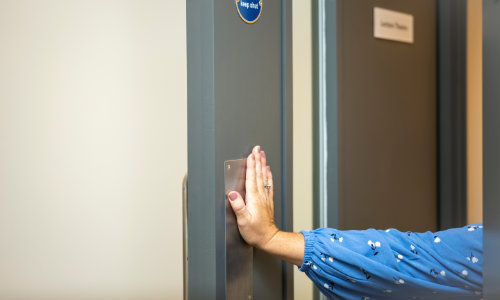
Do Door Plates Require Screws for Installation?
You’ve established the size of protection plate you need but how to install a door kick plate? Kick plates and door push plates come with options for either screw fixing or self-adhesive installation. Most plates will be drilled and countersunk for face fixing and come complete with fixing screws.
Can You Fit a Door Plate to a Fire Door?
The short answer is yes, you can fit a kickplate or finger plate to a fire rated door. They would not be CE marked or tested; they would depend on the percentage surface of the door the plates cover as to whether they would compromise the integrity of the fire door.
A Warrington Fire report prepared for Falcon Panel Product Ltd provides details for 30 minute fire resistant doors in section 16.7.
Can Stainless Steel Kick Plates Erode or Rust?
While stainless steel is resistant to corrosion, it can corrode under aggressive conditions. For such environments, grade 316 stainless steel is recommended. Surface rust or staining can be wiped off as part of your regular maintenance and upkeep routine.
How To Clean And Maintain Door Protection Plates?
Door protection plates are supplied with a peel-off protective layer or coating. Once fitted, this layer is removed. As and when required, wipe your kickplate down with a soft cloth and warm soapy water. Avoid water spots emerging by using a dry cloth to remove excess water. Don’t use an abrasive sponge as this may result in damage to the surface.
Antibacterial coated kick plates are available, and push plates like the HOPPE SecuSan range of plates. Adding this protective antibacterial coating fights viruses in public buildings allowing you to operate safely with peace of mind.
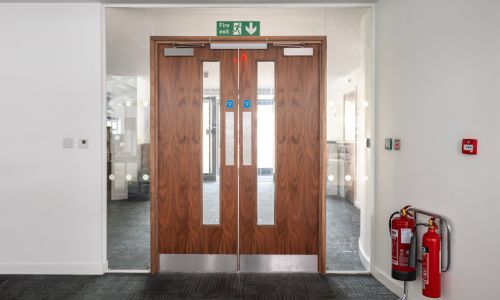
What is the Return Policy for Kick Plates?
Due to the custom nature of kick plates, returns are generally not accepted. It's crucial to order the correct size. Stocked sizes can be returned for credit if in a resaleable condition.
What are the Delivery Times for Kick Plates?
Delivery times vary, but it's common to receive orders within 5-7 working days after placing the order. Stocked kickplates will be sent out on a next working day delivery.
The Last Word on Door Defence
As we wrap up our exploration into the realm of door kick plates and push plates, it's clear that these functional yet stylish fixtures do more than just protect doors; they're a testament to thoughtful design and practicality.
They’re not just one trick ponies either. These plates can be used as mirrors, splashbacks, corner or edge protection, and step nosing. What more could you expect from a humble door protection plate?
Remember, choosing the right kick plate or push plate is like selecting the perfect pair of shoes – it's all about the fit, material, and finishing touches.
Armed with the knowledge from this FAQ, you're now ready to make informed decisions that will not only preserve your doors but also add a dash of elegance to them.
For costs and lead times on bespoke kick and push plates for doors in your facility, contact one of our team today. Here's to longer-lasting doors and a touch of finesse in your built environment.
T: 01305 263300 E: [email protected]






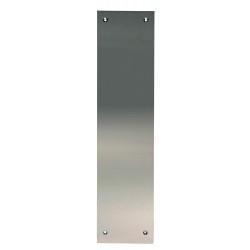
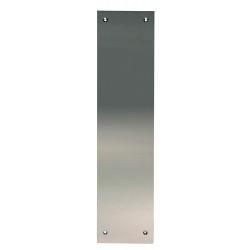
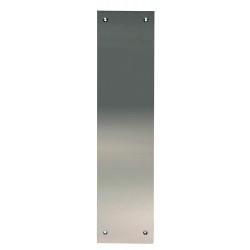
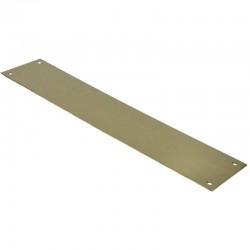

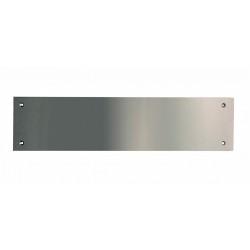
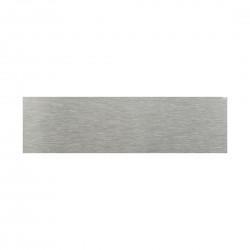




Comments